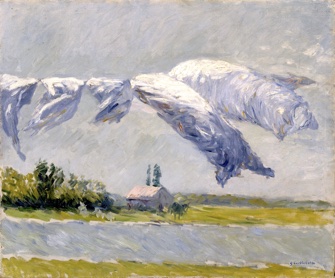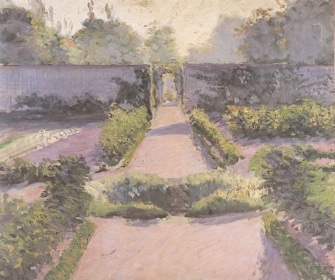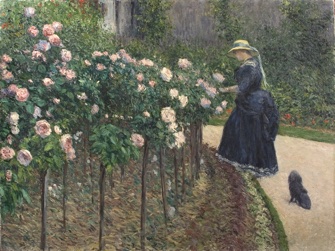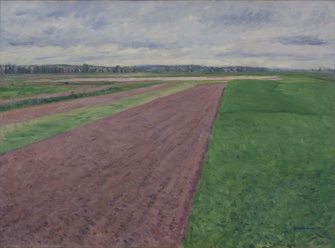
Gustave Caillebotte may be considered a leading light of Impressionism today, but that wasn’t the case in his lifetime, as the curators pointed out at the opening of the exhibition “Caillebotte: Painter and Gardener” at the Musée des Impressionismes in Giverny.
A wealthy man of many interests and talents, the classically trained Caillebotte (1848-94) mingled with the Impressionists and other artists and organized and exhibited in their shows but was seen by his contemporaries more as an engineer (he designed and built his own sailboats) and an enlightened collector and patron of the arts (he financed Impressionist exhibitions and left his collection of Impressionist paintings to the French state, which only took part of it; the movement was still officially scorned at the time).
All that has changed today. Ever since an exhibition at the Grand Palais in 1994, the great originality and modernity of his work has finally been acknowledged, and Caillebotte seems to be everywhere. In 2011, a show at the Musée Jacquemart André featured the work of Caillebotte and his brother, Martial, a photographer, and a couple of years ago, there was a lovely exhibition of his work at his boyhood home in Yerres, near Paris.
Many of the same paintings seen at Yerres are featured here, including the powerful “Les Rabatteurs de Parquet,” revolutionary in its time not only for its subject matter – half-naked men at work scraping down a wooden floor – attacked by some critics for being vulgar, but also for its unusual point of view – they are seen from above.
This lofty viewpoint can be found in many of his paintings, among them “Le Boulevard Vu d’en Haut” (1880), a view of the street seen from the window of his Parisian apartment, also shown here at the beginning of the exhibition, along with other urban subjects and some of his rowing scenes, including the famous “Canotier au Chapeau Haut de Forme” (1878), in which a man in an incongruous top hat pulls at the oars in a rowboat on a river, another work that was ridiculed by the critics at the time but that is highly appreciated today.
Then we get to the real theme of the exhibition, gardening, another of Caillebotte’s passions. The location of this show in Giverny is appropriate since Caillebotte shared his love of gardening and horticulture with his friend Monet, whose famed garden is just down the road from the museum, and corresponded regularly with him and the writer Octave Mirbeau about horticultural matters.
Unlike Caillebotte’s house and garden at Yerres, which have been preserved and are now

open to the public, his subsequent country home in Gennevilliers, also near Paris, has disappeared. The show includes scenes of the nearby Seine along with a number of views of this lost garden, which Caillebotte devoted so much time and attention to. It lives on only in photographs and his paintings.
Some focus on the flowers he loved – chrysanthemums, dahlias, orchids, gladioli – while others take a longer view, showing the rose garden, for example, with an unnamed female figure (the partner he never married, Charlotte Berthier), accompanied by a small

black dog, or a patch of flourishing sunflowers, with the house taking second place in the background.
While a number of these paintings can be classified as Impressionist, many others show a more modern bent that puts him among the forerunners of modernism, along with Degas and Manet. To prove the point, the curators have gathered three paintings showing similar scenes of open fields, The first, painted in 1883, is frankly Impressionist, and the second, painted the same year, a little less so, while the flat planes of color and stark composition of the third work, painted the following year,

shows the artist moving away from Impressionism into a more modern mode.
Caillebotte seems to have lived for his garden at the end of his life, and in a way he died for it. He keeled over while working on it in 1894 at the far-too-young age of 45. What is amazing is how much this man of many talents accomplished before then.
See our list of Current & Upcoming Exhibitions to find out what else is happening in the Paris art world.
Favorite
